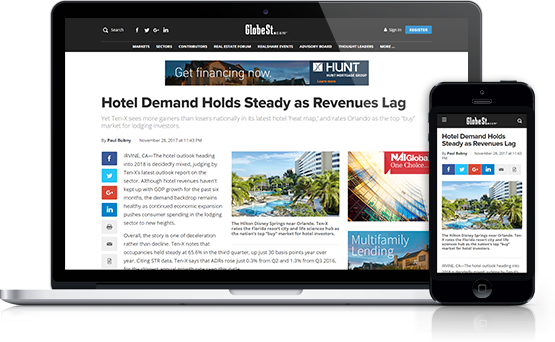ATLANTA-After a decade of robust growth, new retail development, in common with much of the nation, is expected to slow here, though perhaps not as much as in other areas of the country, one of the area's oldest brokerages foresees.
“All the negative apprehension notwithstanding, we continue to be active in retail development,” Caldwell Zimmerman, president of the retail division at Colliers Cauble & Co. in Atlanta, tells Globest.com.
A nationwide study by Colliers International predicted the “retail landscape is set to slow significantly,” according to its author, Ross Moore, vice president and director of research. The Sun Belt, however, remains a hot spot for growth.
“Based on three-year forecasts for population growth, personal income, housing starts and gross metropolitan product, the Sun Belt cities of Atlanta, Las Vegas, Phoenix and San Diego are expected to remain target markets for most retailers,” Moore says.
Atlanta has in some years generated 100,000 new jobs, which has propelled retail growth. That's almost certain to slow down.
“Atlanta has always had the good fortune of having new retailers coming to town,” he says. “I think it's because we've been such a strong retail market with high per capital spending.”
While Zimmerman also expects the market to slow somewhat, he says, Atlanta's upscale nature has always meant that retailers have traditionally been quick to fill any gaps left by stores leaving the market.
Even now, with two major malls under way, there is speculation of another one along the I-85 corridor south in Locus Grove, Henry County. Another rumor has it a high fashion mall is coming to North Atlanta.
Grocery-anchored malls do not seem to have been curtailed. But because of cost and availability, some users such as Publix have been content with smaller than usual spaces, perhaps 20,000 sf or so.
One area of retail activity not expected to grow, however, is the big boxes, with lending institutions reluctant to support them. “They may be somewhat out of favor because when the big boxes go dark, there's only a finite number of replacement tenants,” Zimmerman says.
Still, if the area is getting a glut of retail space, lenders don't seem to be worried, he says.
“In general, the lenders are there if there are tenants signing long-term leases and there's not excessive speculative space,” Zimmerman says.
Acerage for suburban retail sites has been running about $100,000 to $125,000 an acre; $250,000 to $400,000 per acre for the fringe of the urban area and $25 per sf to $30 per sf for Downtown.
But sites are hard to find. Zimmerman sees retail development as “still having a lot of vitality… if you can pry the site loose.”
Want to continue reading?
Become a Free ALM Digital Reader.
Once you are an ALM Digital Member, you’ll receive:
- Breaking commercial real estate news and analysis, on-site and via our newsletters and custom alerts
- Educational webcasts, white papers, and ebooks from industry thought leaders
- Critical coverage of the property casualty insurance and financial advisory markets on our other ALM sites, PropertyCasualty360 and ThinkAdvisor
Already have an account? Sign In Now
*May exclude premium content© 2025 ALM Global, LLC, All Rights Reserved. Request academic re-use from www.copyright.com. All other uses, submit a request to [email protected]. For more information visit Asset & Logo Licensing.








